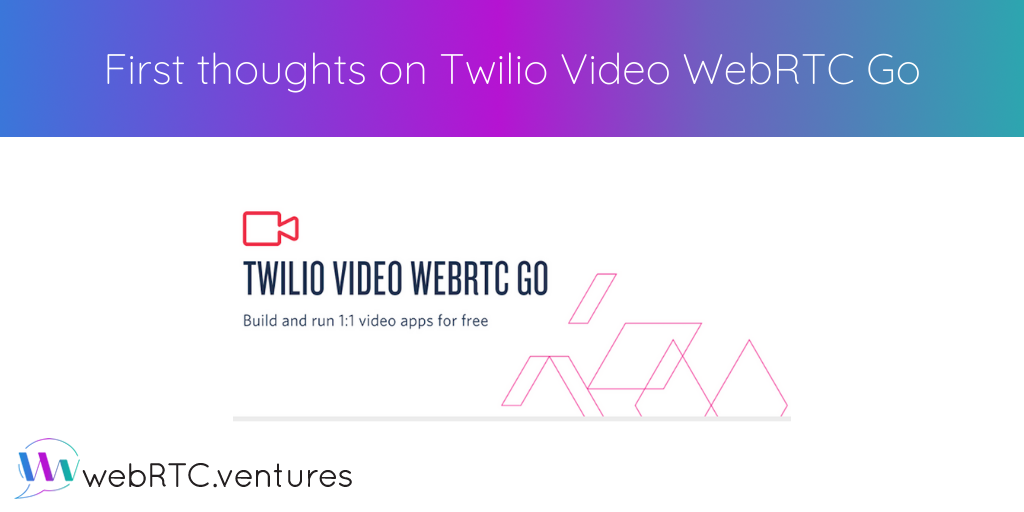I’ve been to some fun conferences. Twilio always puts on a good show — and an even better after party! So it certainly one of the many (very understandable) disappointments of this year was that SIGNAL 2020 would be remote. Alas, I would not have the chance to cross lightsabers again with Twilio CEO Jeff Lawson.

Not surprisingly, Twilio still did a nice job putting on an online conference. And even more impressive, they took the opportunity to use their own technology to host the conference. This is a great example of when it’s better to create a custom application to have the experience you want, instead of trying to shoehorn your vision into an off the shelf platform. We believe strongly in this, but that’s not what I want to talk about in this post.
The big Video-related announcement at Twilio’s SIGNAL 2020 was their introduction of a free entry-level tier for building live video applications. It is called “Twilio Video WebRTC Go” and I speak about it in the below video, part of our new YouTube series, WebRTC Tips by WebRTC.ventures.
You can read about the announcement and get more details on the Twilio blog, but I’ll briefly discuss a few key takeaways about WebRTC Go here. If you’re interested in reading in depth analysis about the rest of what happened at SIGNAL 2020, check out this blog post by Tsahi Levent Levi.
Takeaway #1 – Free is good!
There are a lot of people experimenting with WebRTC right now globally, but it’s not always easy to get started with WebRTC. There’s a lot to learn! Since Twilio has a history of making very developer-friendly APIs, then offering a free tier for Video users is a nice offering that will undoubtedly bring them some new business as developers build Twilio-based apps and then graduate to Twilio’s paid Video tiers as their app grows.
Takeaway #2 – Only for 1-1 video calls
There’s always an asterisk next to the word “Free,” and that’s true here as well. The WebRTC Go tier is only for 1-1 video apps. That’s because scaling WebRTC into group video chat requires a lot more server resources. So Twilio has to protect their investment by only allowing free usage in the 1-1 use case. That also means the calls are going to all be Peer to Peer, with no Twilio media server needed. So, the burden of this free tier on their infrastructure will be minimal.
Having a free solution for 1-1 Video is great. But, many of the most interesting WebRTC use cases these days go beyond 1-1 and you’ll still need to pay Twilio to do that.
It’s also worth noting that if your use case is exclusively 1-1, there are other open source examples you can use to build a simple WebRTC app. So what’s the big deal about Twilio’s free tier? That brings us to the next takeaway…
Takeaway #3 – Free TURN server (up to 25GB/month)
Even if you are building a simple 1-1 WebRTC application based on open source examples, you still need to use a STUN and TURN server to establish the Peer to Peer connections. STUN is easy, as there are free public servers you can use if needed. But you also need TURN, which requires more server bandwidth since it relays video — and Twilio is the first company to offer a free tier of TURN usage. 25GB may not be a lot, but it’s still nice for the development and beta testing phases where you won’t have much usage anyway.
If you’re not familiar with these concepts, see our WebRTC Tip about STUN and TURN servers.
Takeaway #4 – The CPaaS (Communications Platform as a Service) market is adapting in 2020
In short, I think this is a very good announcement by Twilio. Sure, there are some caveats to any Free tier, but this shows how the coronavirus pandemic has focused the attention of companies like Twilio on Video. Their API offerings have traditionally been more focused on messaging and IoT applications. I expect that will remain the case, but they have a good Video product and this announcement shows they plan to improve their offering to meet the growing needs for live video and remote work in our current global climate.
What’s next for CPaaS?
And Twilio’s not the only one. Microsoft and Amazon have also announced they will be getting into the CPaaS market.
———
As always, our team at WebRTC.ventures will be keeping a close eye on changes in the CPaaS market so that we can continue to serve you. We are leading integrators of WebRTC into custom web and mobile applications. If you’re considering building a custom video application, contact us for a quote!




